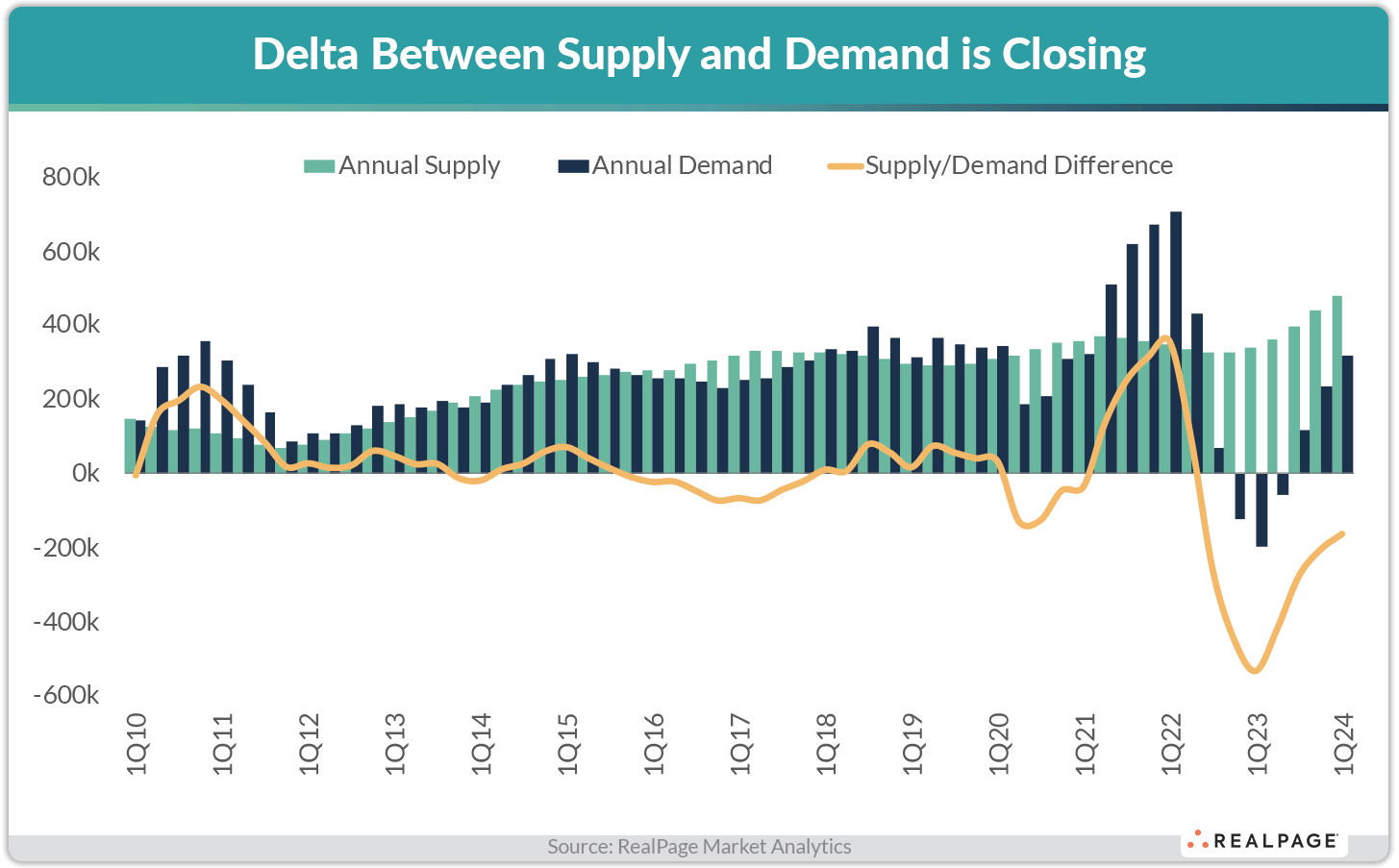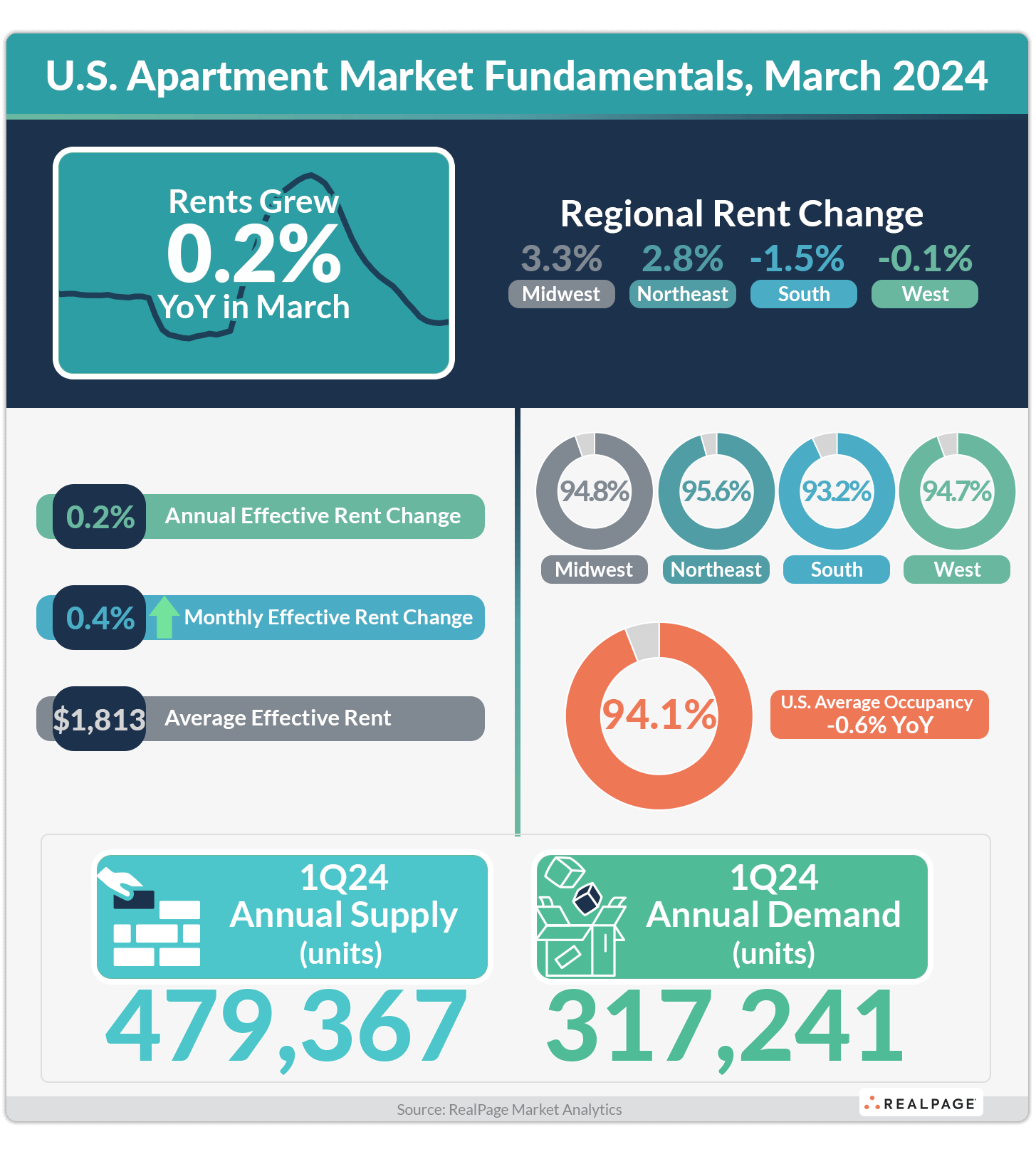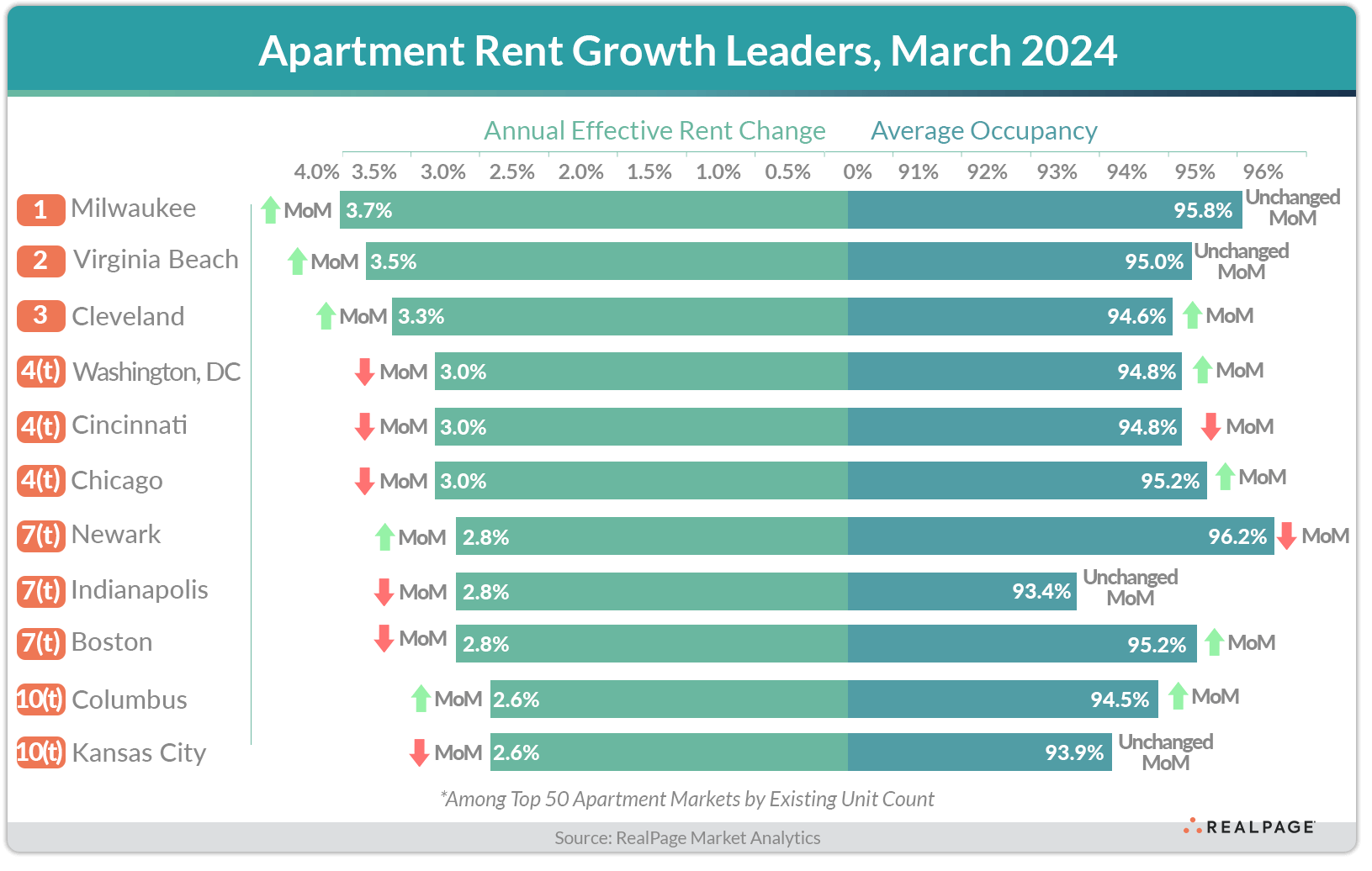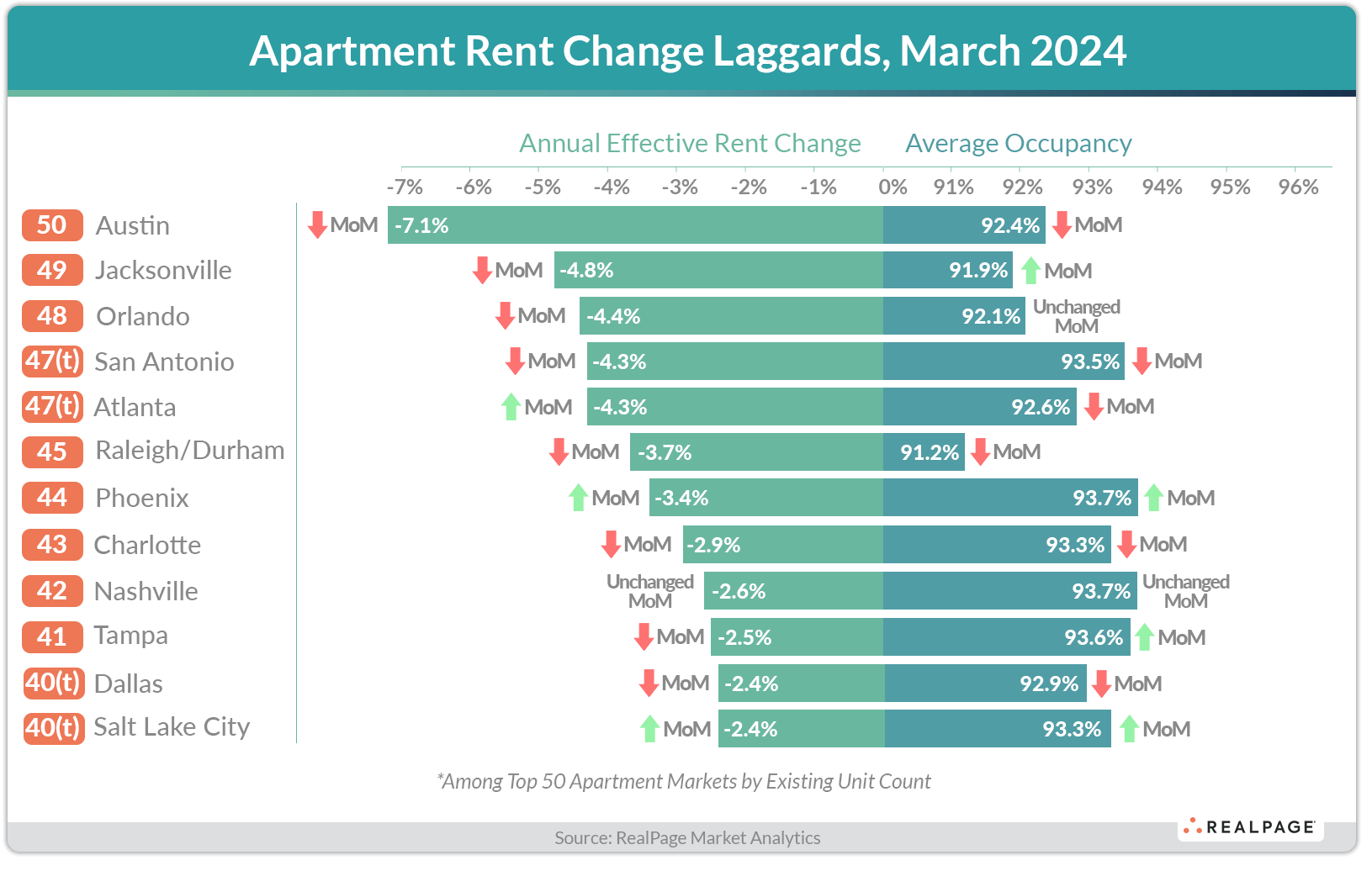Despite apartment demand recovering to stand above normal levels in 1st quarter 2024, even heavier supply continued to weigh down rent and occupancy figures.
In the first three months of 2024, the U.S. absorbed 103,826 apartment units on net, according to data from RealPage Market Analytics. That strong quarterly tally brought annual demand to stand at 317,241 units absorbed in the year-ending 1st quarter 2024. That rate registered about 20% higher than a typical annual absorption rate from the 2010s decade.
Fueling this demand strength is a confluence of factors, including persistent wage growth (which has now outpaced rent growth for 16 straight months), solid job growth, demographic tailwinds and arguably the lowest level of move-outs from apartment units and into single-family homes since the Great Financial Crisis.
Still, even higher-than-average demand failed to keep pace with nearly unprecedented supply that delivered concurrently. In the first three months of 2024, there were 135,652 apartment units completed nationwide. In total, the U.S. delivered 479,367 new multifamily units in the year-ending 1st quarter 2024, representing a 10% increase from the prior quarter.
New apartment supply continues to be the primary influence on national performance. We’re sitting at the highest annual supply figure dating back to 1986 when approximately 550,000 new units were delivered. Though it’s important to note that today’s relative expansion rate of 2.5% remains comfortably below the 1986 expansion rate of 3%.
Also of note, the difference between supply and demand narrowed in 1st quarter to its lowest delta since mid-2022. The mismatch between supply and demand shrank to approximately 160,000 units – still a historically high figure, but much lower than the over 530,000-unit delta seen one year ago.
Slight Rent Growth Still Typical Nationwide
As has been the case for several months, rent growth for professionally managed apartments remained near stagnant nationwide as of March. Asking rents for professionally managed apartments inched up just 0.2% in the year-ending March 2024, with change measured on a same-store basis.
That rate mirrored February’s annual rate, indicating that as the imbalanced relationship between supply and demand narrows, rents rent growth will likely remain muted throughout the remainder of 2024.
This interplay between supply (much higher than usual) and demand (strong, but trailing supply) is the crux of today’s modest rent growth.
Occupancy, meanwhile, remained lower than typical, but not to a severe degree. Apartment occupancy averaged 94.1% nationwide as of March, matching February’s rate and holding approximately in line with the long-term average.
Rent Growth Leaders and Laggards Divided by Supply
Markets with very modest new supply tended to grow rents at the fastest pace in 1st quarter 2024. Of the 12 major markets that posted annual effective rent growth of 2.6% or higher in March, all but two (Columbus and Indianapolis) concurrently posted annual inventory growth below the national norm. The lower the annual inventory, the more likely a market is to be posting nation-leading rent growth.
Conversely, markets that delivered the most new supply tended to experience the most downward pressure on rents. Of the 11 major markets posting annual rent cuts of 2.5% or deeper in March, all concurrently posted annual inventory growth above the national norm. As has been the case for months, markets delivering the most new supply – such as Austin, Atlanta and Dallas – were all among the national laggards for rent cuts in March.
Regionally, the Midwest and Northeast continue to lead with historically normal rent growth. Rent change in the South region, meanwhile, continues to labor under considerable supply pressure. The West region shows mixed results. Soft performance in more inner-West markets, such as Phoenix and Salt Lake City, can be attributed to hefty supply. In more coastal West markets, such as the Bay Area, other factors such as out migration and job losses, appear to be softening apartment demand.











